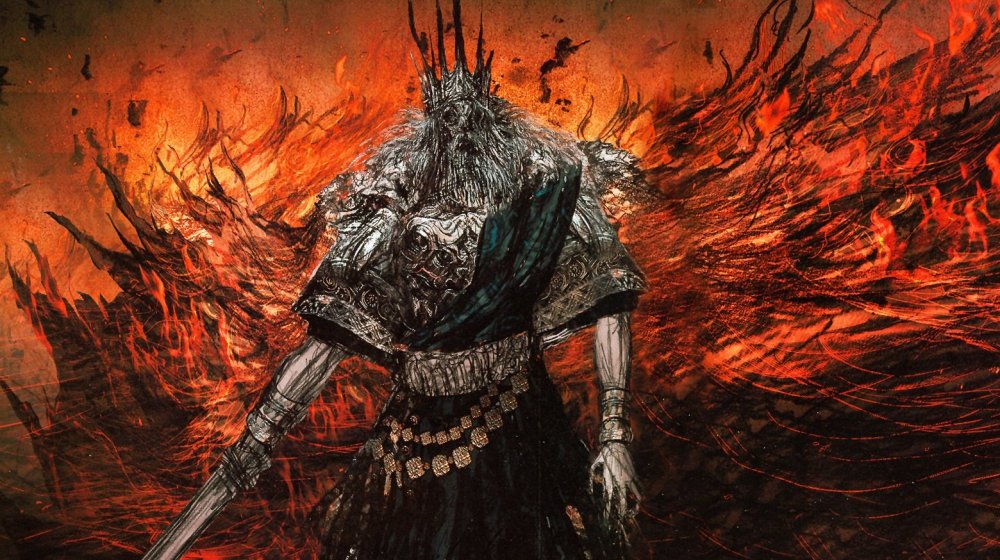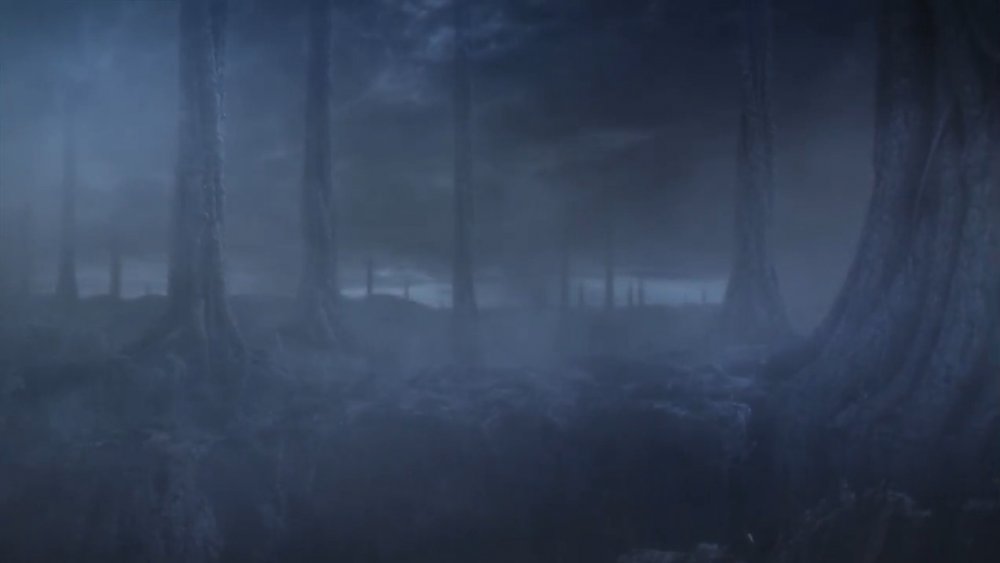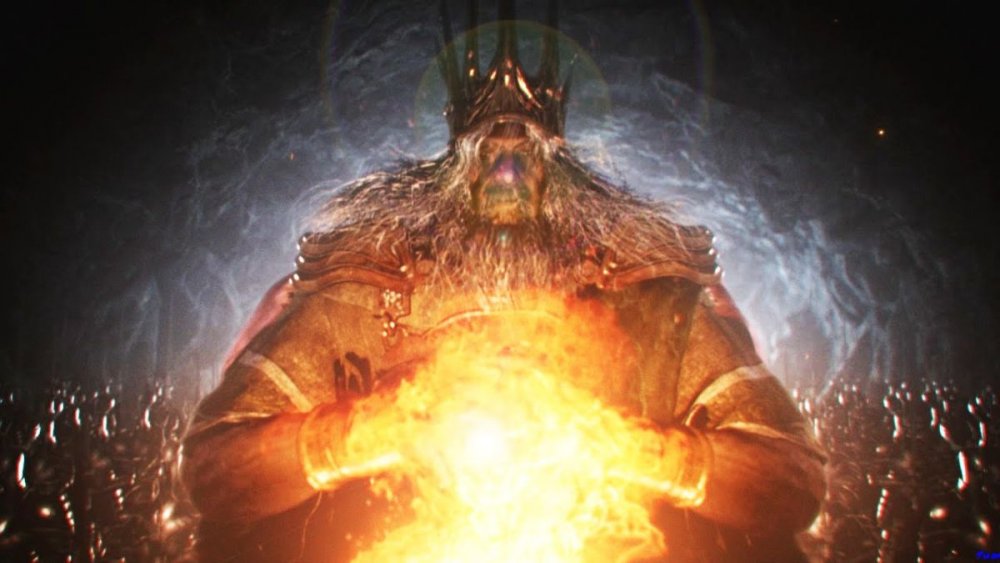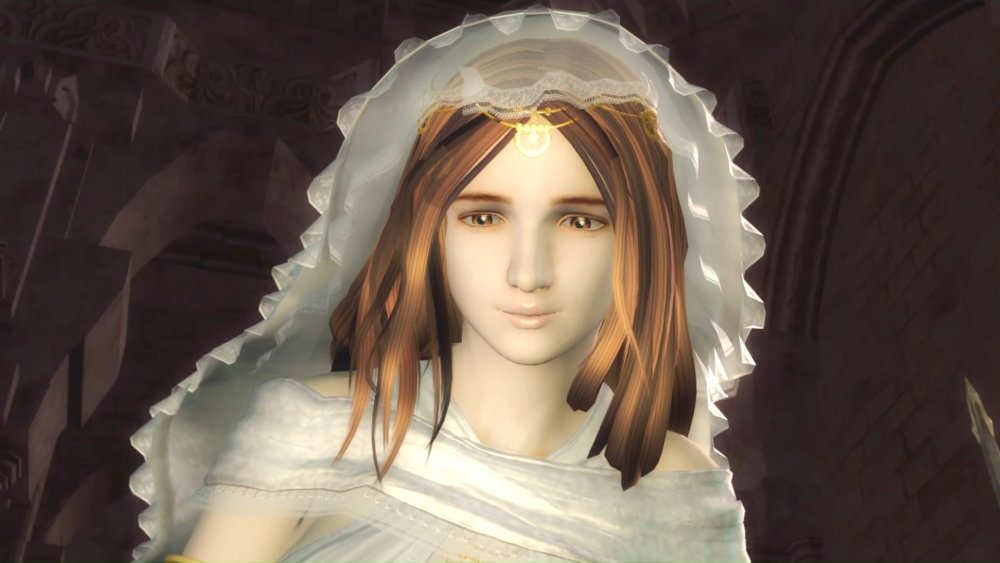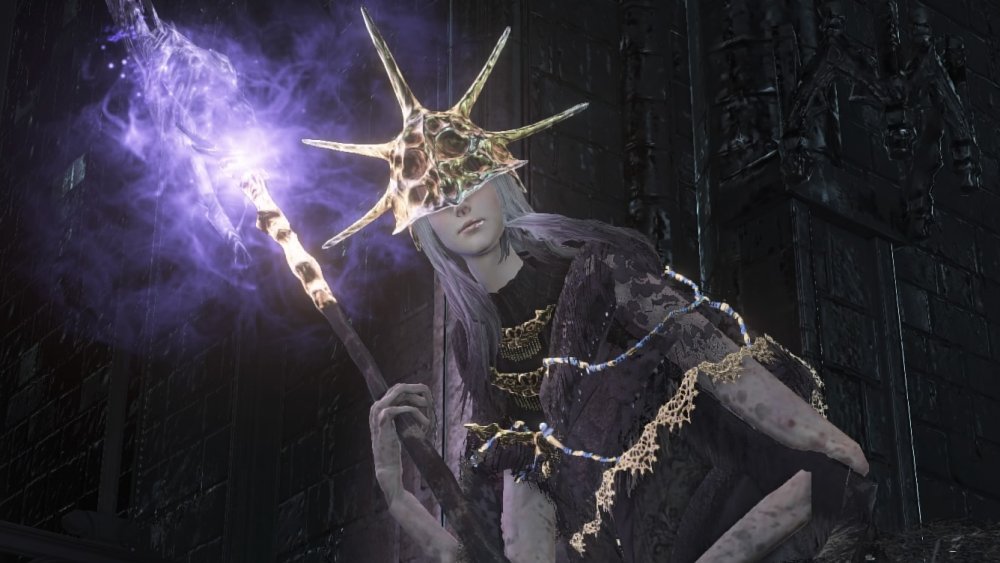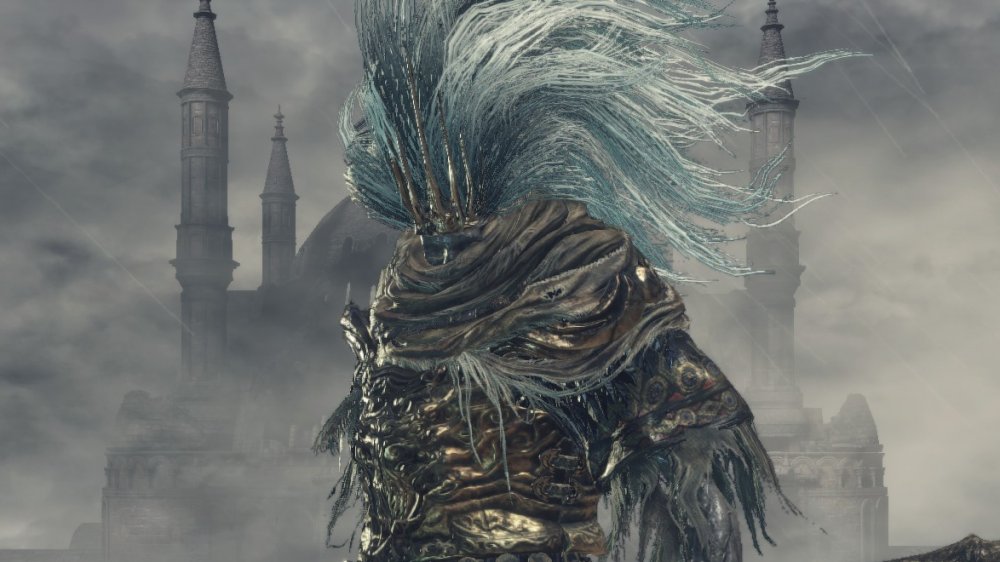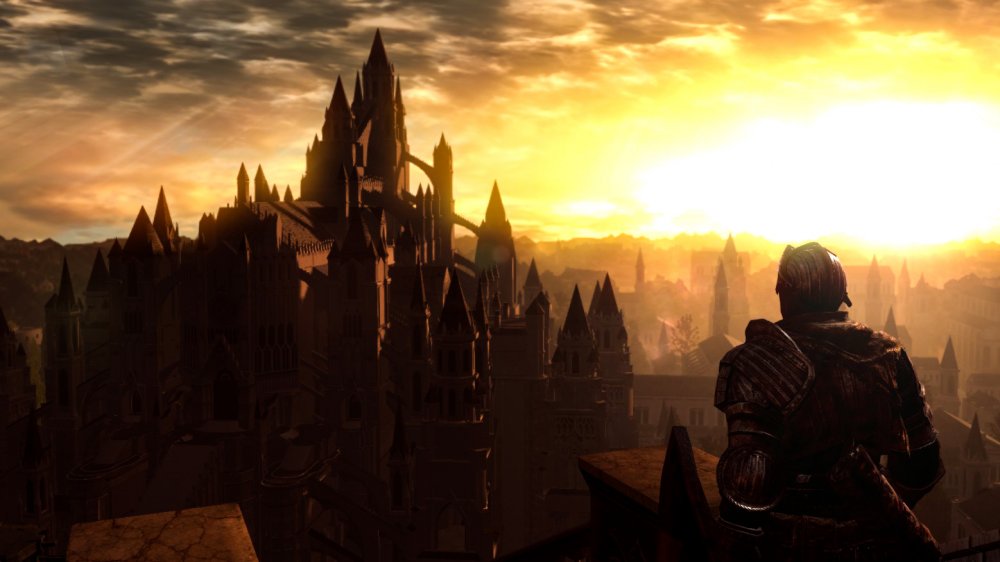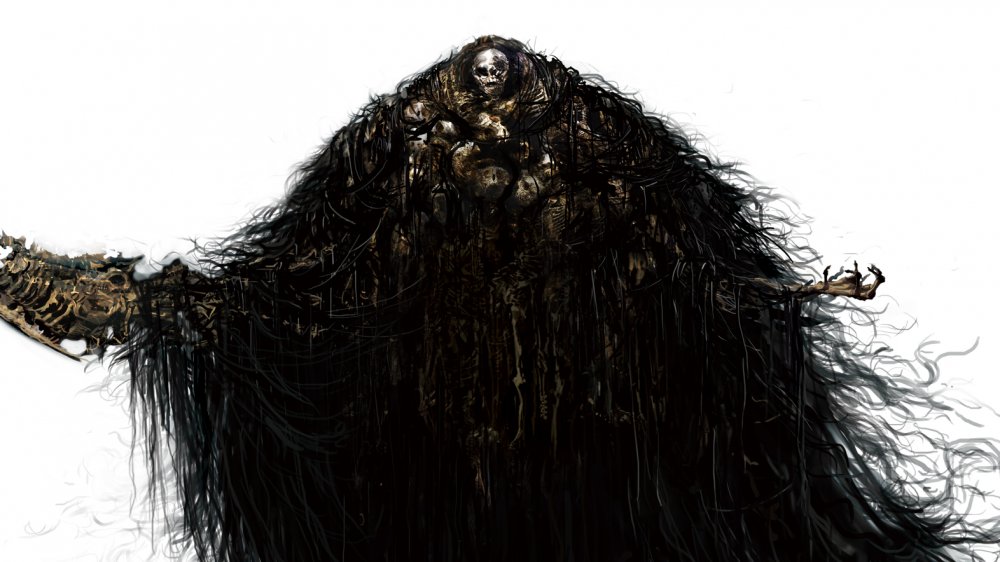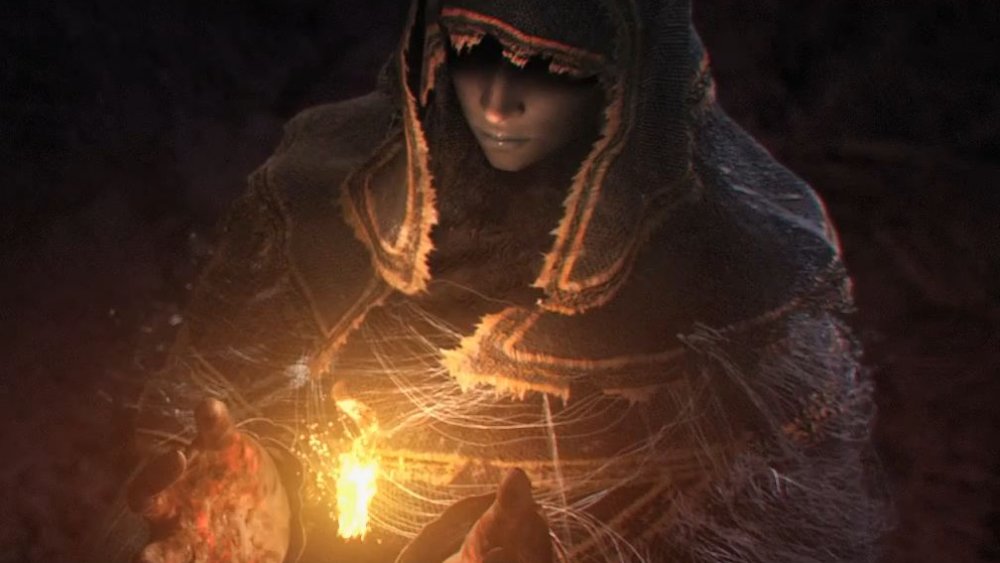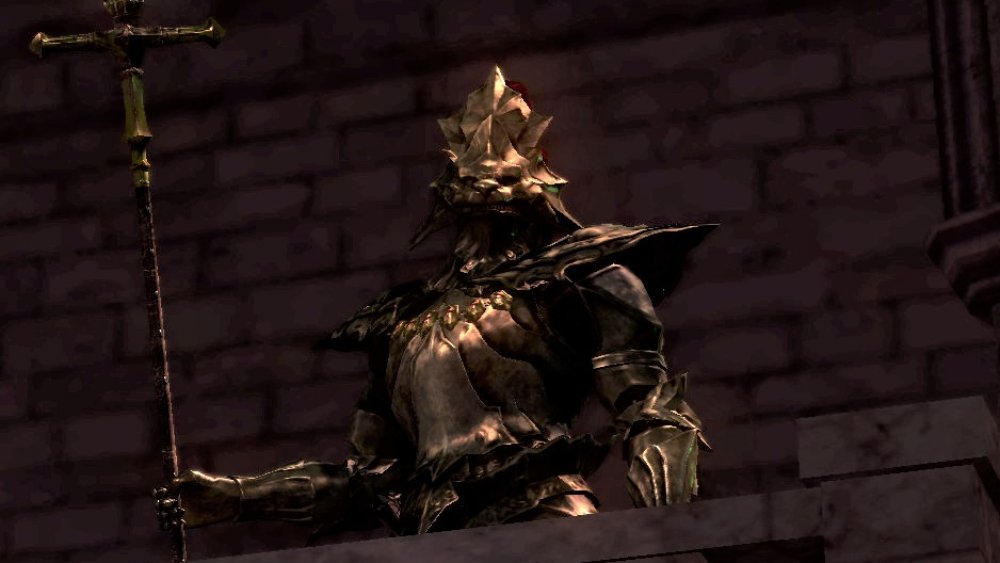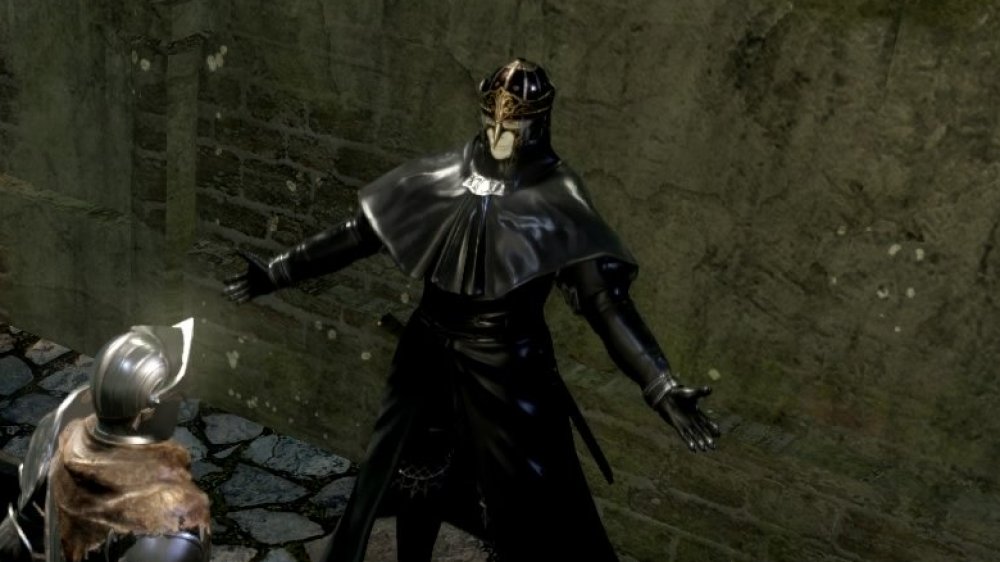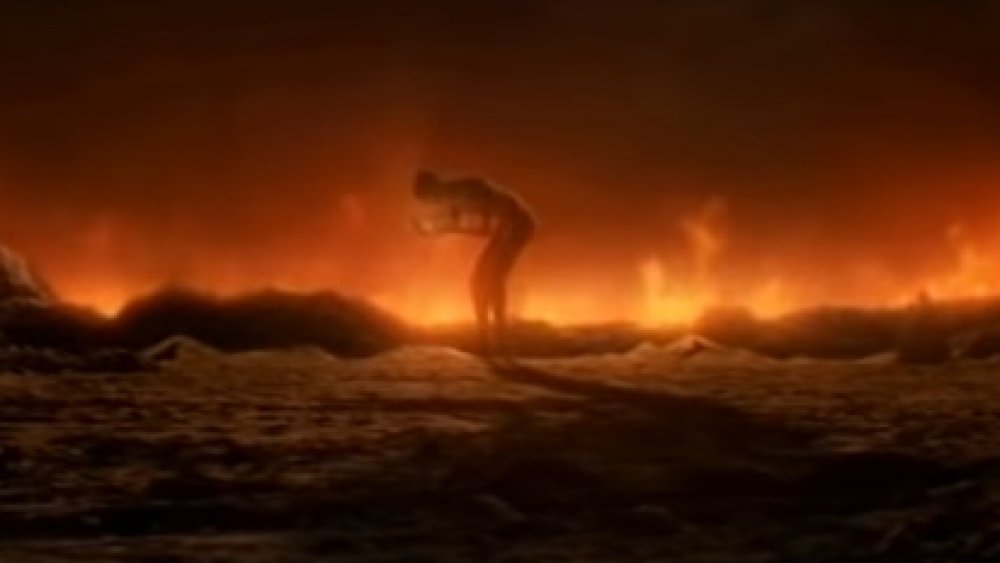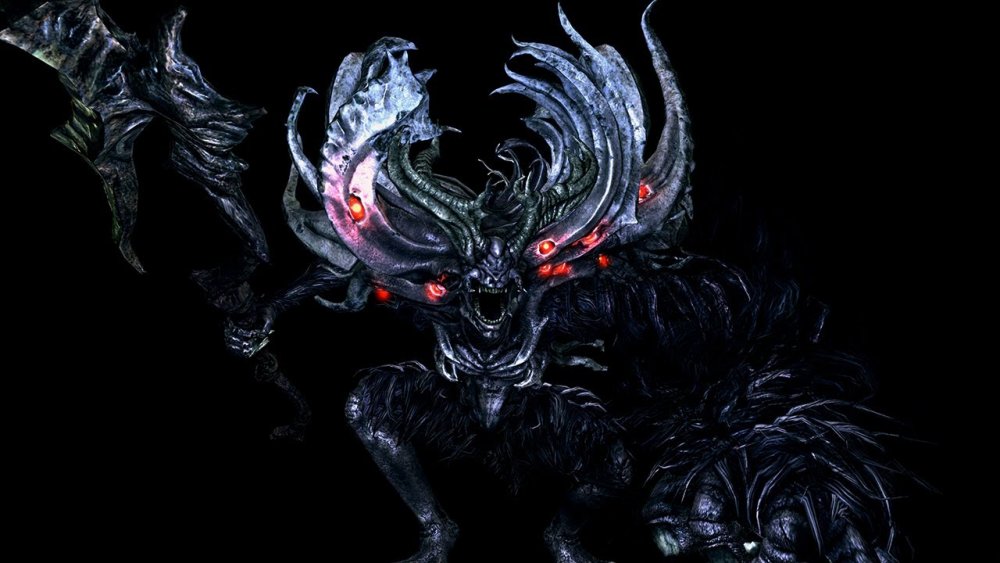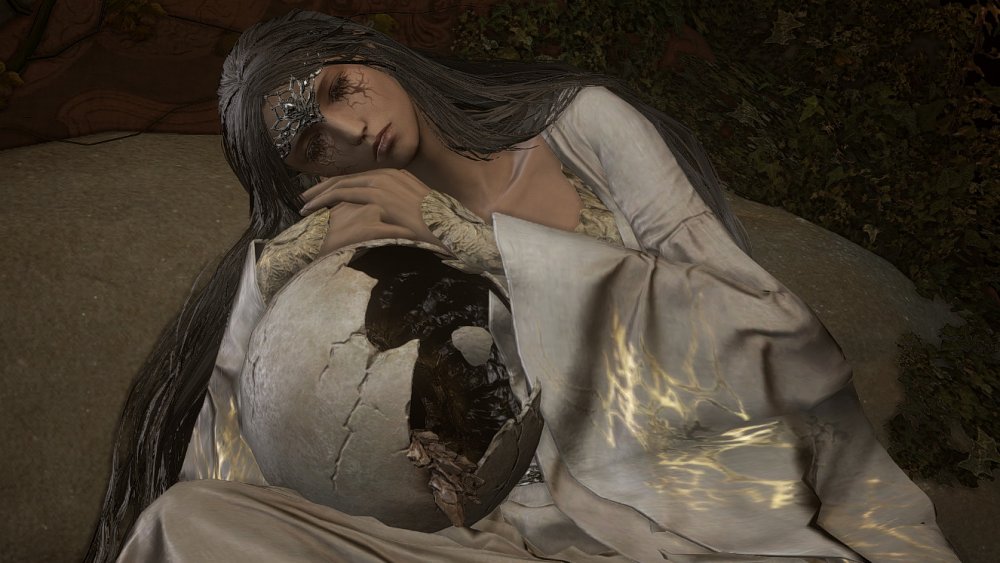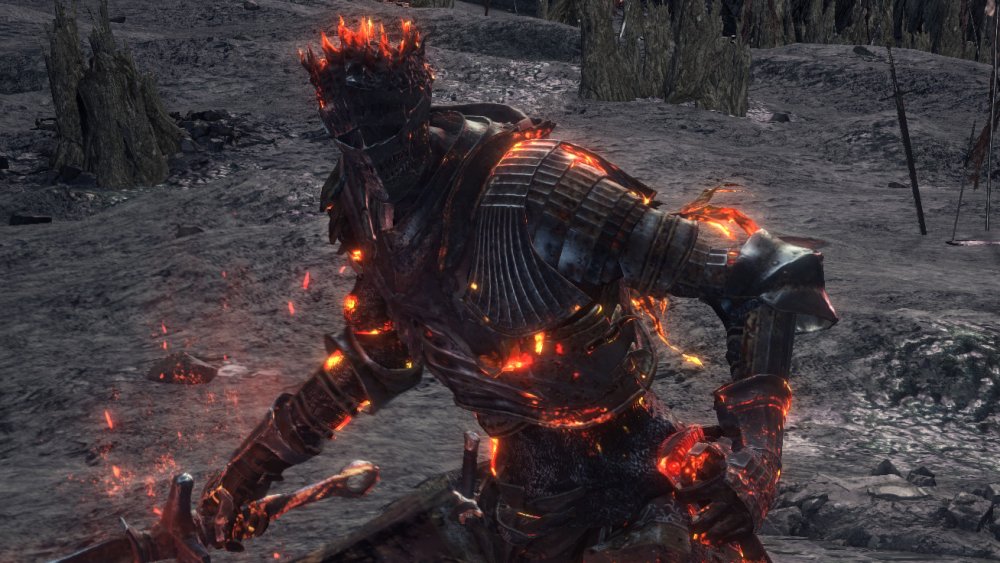The Mythology In The Dark Souls Series Explained
Mythology is the foundation of the Dark Souls series' story, lore, and player experience. In these games, you often find yourself following the gods' commands, seeing their effects on the world around you, and interacting with them directly. As the player in a Dark Souls game, you become part of the cycle of death and rebirth mentioned in its mythology, both through its harsh gameplay and rich storyline.
If some of the mythology in the Dark Souls games seems familiar, that's because it draws a lot of parallels with legends from across the world. These similarities can help you feel like part of your own epic as you read the game's dialogue and item descriptions to find out how the gods have shaped the world around you.
The following figures, concepts, and places form the core mythology of the Dark Souls series, with plenty more characters and locations continuing their legacy. As you might imagine, there will be spoilers for all three games ahead.
The transition from the Age of Ancients to the Age of Fire
The first Dark Souls game sets the stage for the rest of the series' lore by explaining how the world was created and establishing your role in its rebirth in its opening cutscene.
During the Age of Ancients, the world was unformed, but Fire brought about life's opposites, including light and dark. In the dark, four figures emerged and discovered the Souls of Lords. These Lords, Gwyn, the Lord of Sunlight, Gravelord Nito, the Witch of Izalith, and the Furtive Pygmy, set the foundation of the world of Lordran. After winning their war with the Dragons, they began the Age of Fire. But, the Dark Souls games happen during the end of the Age of Fire, with Dark threatening to take over the world.
This creation myth resembles those that involve what Encyclopedia Britannica calls "creation through emergence." Instead of a god creating the universe, the world had always existed. While the Lords created the foundation for the Dark Souls world, the cinematic implies that Dragons were around before they claimed the Souls of Lords.
Gwyn, Lord of Sunlight and Cinder
During the start of the Age of Fire, Gwyn, Lord of Sunlight, discovered one of the four Lord Souls and became the king of Lordran, the world of Dark Souls. He ruled Lordran with a pantheon of gods in Anor Londo before leaving his kingdom to prolong the Age of Fire.
Out of the four Lords, Gwyn has some of the greatest influence over the player's story in all three games. In Dark Souls 2: Scholar of the First Sin, the titular scholar, Aldia, explains that Gwyn's forcing out of the dark caused the cycle of the Ages of Fire and Dark to happen. In other words, the approaching Age of Dark became a problem because Gwyn made it one. Aldia says that he "banished Dark, and all that stemmed from humanity," implying that Gwyn weakened humanity by getting rid of the Dark. The player must extend the Age of Fire or remove humanity's curse due to Gwyn's actions in the Age of Ancients.
Gwyn resembles many mythical figures, especially the Greek god Zeus. His lightning powers and long beard, as well as his status as head of a pantheon of gods, give Gwyn plenty in common with Zeus.
Gwynevere, Princess of Sunlight
Gwyn's daughter, Gwynevere, provides the player character with the Lordvessel needed to link the First Flame. According to in-game item descriptions, she married the Flame God, Flann, and had many children with him. By unlocking a certain secret in Anor Londo and paying close attention to these item descriptions, though, you discover that she left the City of the Gods a long time ago.
Gwynevere has a lot in common with mother goddesses across mythology. According to Encyclopedia Britannica, myths throughout the world feature mother goddesses who represent motherhood and fertility. Many of these goddesses enter a divine marriage like Gwynevere's marriage to Flann.
The game's creators also designed her as a motherly kind of figure. Director Hidetaka Miyazaki based her concept on a giant woman from a manga he read who took care of the characters like a mother. "...don't you think that's just a perfect situation? A giant, considerate, caring woman," he explained in a Dark Souls: Design Works interview. "The kind we all lost when we grew up; that's what I wanted to make."
Dark Sun Gwyndolin
Gwyndolin, one of the sons of Gwyn, is the only deity left behind in Anor Londo, the city of gods. He created an illusion of a sunny Anor Londo with Gwynevere awaiting the player character to convince them to link the First Flame and continue the Age of Fire. From Gwyn's honorary tomb in Anor Londo, he watches over the city and searches for a Hollow who can link the fire.
According to the item description for his robe, he was raised as a woman because of his affiliation with the moon. The Reversal Ring item description from Dark Souls 3 also mentions this fact. Besides these item descriptions, not much else evidence explains why the Anor Londo gods associate the moon with the feminine. While Gwyn felt that he had to raise Gwyndolin as a daughter because of his link to the moon, Gwynevere, one of his daughters, has the title of "Princess of Sunlight," putting that logic into question.
Years after the first Dark Souls in Dark Souls 3, Gwyndolin continues to rule Anor Londo as it became Irithyll of the Boreal Valley. The Lord of Cinder Aldrich consumes him and becomes the Devourer of Gods.
Gwyn's forsaken son and the Nameless King
Item descriptions and environmental details in the first Dark Souls imply the existence of Gwyn's firstborn son, who was banished from Anor Londo. He inherited the power of sunlight from his father, but as a god of war, he preferred to use elemental weapons such as the Great Lightning Spear and Sunlight Blade. Because of what an item description calls "his foolishness," this son had his status as a god taken away.
Dark Souls 3 has a bonus boss called the Nameless King, implied to be that son. In-game text refers to him as a former god of war and heir to sunlight. The boss' appearance and musical motifs also have similarities to Gwyn, such as his crown and bracelets. According to the content in Dark Souls 3, the Nameless King sacrificed his kingdom to ally with the Dragons.
The Nameless King has traits in common with outcast gods like Hades, who rule alone. Just as Hades ruled the Underworld outside of his brother Zeus' pantheon, the Nameless King lives in Archdragon Peak, a realm dedicated to worshipping the ancient Dragons.
Anor Londo, the City of the Gods
Anor Londo, the City of the Gods, serves as a mythical and physical location in the first and third Dark Souls games. The first part of the Dark Souls plot focuses on the player's journey to Anor Londo. There, they receive the Lordvessel from Gwynevere and instructions to collect the Lord Soul and link the First Flame. In Dark Souls 3, the player character discovers the remnants of Anor Londo in Irithyll of the Boreal Valley.
By the time that Dark Souls or Dark Souls 3's protagonist reaches this mythical city, all of the gods have been long gone, except for one. Gwyndolin, son of Gwyn, watches over Anor Londo until the Lord of Cinder Aldrich consumes him. Items related to Gwynevere, Gwyn's daughter, have descriptions that mention most of the gods leaving the city.
You'll find Anor Londo's roots in real-life and mythological locations. The idea of Anor Londo resembles the concepts of Olympus and Camelot, where mythical figures come together to rule their realms. According to one of the interviews in the Dark Souls: Design Works book, Anor Londo's architectural design is inspired by the real-life Milan Cathedral.
Gravelord Nito
Gravelord Nito was another one of the figures who claimed a Lord Soul at the beginning of the Age of Fire, becoming a Lord. His Lord Soul gave him control over death and illness, which he used to win the war against the Dragons.
You can find Gravelord Nito's influences in the first two Dark Souls games. In the first game, the player character must kill him in the Tomb of the Giants to add his soul to the Lordvessel. Thousands of years later in Dark Souls 2, the Milfanito and Fenito continue his job of watching over the dead. They refer to him as the Great Dead One and sing a song that he taught them to comfort those bearing death.
His skeletal form and power over death and disease might remind you of figures like Hades and the Grim Reaper. While Hades rules the Underworld, Nito oversees death from the Tomb of the Giants. The Grim Reaper often looks like a skeleton in its portrayal, and Nito has a skeletal figure and armor made out of skeletons.
The Witch of Izalith and the Daughters of Chaos
During the start of the Age of Fire, the Witch of Izalith also laid claim to a Lord Soul and shared it with her daughters. Using their shared power over firestorms, they fought against the Dragons.
After trying to recreate the First Flame with fire magic, the Witch of Izalith became the Bed of Chaos, the source of all Demons, and her daughters became spider-like monsters called the Daughters of Chaos. This event has consequences that impact all three games in the series. In Dark Souls, the player character has to kill the Bed of Chaos to claim what remains of the Witch's soul. You can also find Demons and their fiery realm in all three games.
The Witch of Izalith's mistake also led to the birth of Pyromancy through one of her surviving daughters. After fleeing the failed First Flame, she taught Salaman, the first human pyromancer, how to stop fearing fire and control its powers. Salaman went on to teach his own pupils Pyromancy.
The Four Knights of Gwyn
Just as King Arthur had his Knights of the Round Table, Gwyn had his Four Knights – Dragon Slayer Ornstein, Artorias the Abysswalker, Lord's Blade Ciaran, and Hawkeye Gough. Ornstein guards Gwynevere's chambers in Anor Londo alongside Executioner Smough in the Dark Souls base game. The other three knights appear in the same game's Artorias of the Abyss DLC. In this extra content, the player character travels back in time to witness Artorias' death and the events surrounding it.
You can find numerous references to these knights in Dark Souls 2 and Dark Souls 3, especially to Ornstein and Artorias. Ornstein has the most frequent references in the series, including the Old Dragonslayer boss in Dark Souls 2 and the Dragonslayer Armor fight in Dark Souls 3. The description for the Dragonslayer Set in Dark Souls 3 reveals that Ornstein left Anor Londo in search of Gwyn's forsaken son, the Nameless King.
Artorias' legend lives on in Dark Souls 3 through the Abyss Watchers boss. After Artorias' death, they continued his fight against the Abyss. The player character must defeat them to take their shared soul.
The pantheon of Anor Londo
In addition to Gwyn, Anor Londo was home to a pantheon of gods that ruled various aspects of human life. These gods included Gwyn's two sons and one of his daughters, but in-game lore doesn't mention the mother to his children at all. The gods outside of Gwyn's family ruled topics such as dreams, greed, struggle, and medicine. Eventually, Gwyn's pantheon left Anor Londo, with most of its members going to unknown destinations.
Some of the better-known inhabitants of Anor Londo who didn't belong to Gwyn's family include Velka and Allfather Lloyd. Velka, Goddess of Sin, defines sin and punishes humans accordingly. The NPC Oswald of Carim forgives your character's sins in the original Dark Souls and sells items related to Velka. In the same game, you can find NPCs at Firelink Shrine who belong to the Way of White that worships Allfather Lloyd.
Just as Gwyn might remind you of Zeus, the gods of Anor Londo have similarities to the gods of Olympus in Greek myth. On Mount Olympus, Zeus and his fellow Olympians ruled every aspect of human life.
The Furtive Pygmy and the Dark Soul
The fourth figure to claim a Lord Soul at the beginning of the Age of Fire was the Furtive Pygmy. In the first game's opening cutscene, they appear very briefly, and the narrator refers to them as "so easily forgotten." Throughout the rest of the series, no character or item description mentions them by name ever again.
In an interview on a Japanese gaming podcast, Dark Souls and Dark Souls 3 director Hidetaka Miyazaki confirmed that the Furtive Pygmy was the ancestor to humans. According to Miyazaki, they split the Lord Soul that they claimed into individual human souls.
Dialogue from Darkstalker Kaathe, a primordial serpent trying to bring the Age of Dark in Dark Souls, refers to this Lord Soul as the Dark Soul. In Dark Souls 3's The Ringed City DLC, Slave Knight Gael goes to the Ringed City, the home of the pygmies, to take their Dark Soul. His master, the Painter, plans to use the Dark Soul to paint a new world. After the player character defeats Gael as the DLC's final boss, they bring the Dark Soul to the Painter.
Manus and the Abyss
Continuing the myth of the Furtive Pygmy and the Dark, some Dark Souls lore fans think that the Artorias of the Abyss DLC boss Manus, the Lord of the Abyss, that threatens to consume Oolacile, is the Furtive Pygmy. Dialogue from the DLC explains that the people of Oolacile dug up the grave of primeval man, inciting his wrath and bringing the Abyss upon themselves.
A contributor to the Dark Souls Wiki also points out that the name "Manus" resembles the name of Mannus, the father of humans in Germanic myth.
The Abyss, humans, the power of Humanity, and the Dark are all conceptually linked in the Dark Souls series. In Dark Souls: Artorias of the Abyss, you can find enemies made up of the essence of Humanity throughout the Abyss. You can also visit a location in Dark Souls 3 that appears to show the starting area during the Age of Dark, which confirms that like the Abyss, a world in the Age of Dark would have no light.
Filianore and the cosmic egg
In the Dark Souls 3's The Ringed City DLC, you discover a fourth child of Gwyn – Filianore, a princess who guards an egg that seems to control time. Unlike Gwyn's other children, she does not come up in the first two games, making her appearance in the last game's post-storyline content a surprise. An item description explains that Gwyn left Filianore in the Ringed City, promising her that he would return "when the day came."
At the end of the DLC, you encounter Filianore sleeping with a cracked egg. The Pygmy King calls her slumber a "prop to keep thee from the dark soul of thine desire," implying that she guards the Dark Souls that the citizens of the Ringed City hold. When the player character touches the egg, the environment changes. Filianore becomes a decayed corpse, suggesting that she created an illusion with the egg or the egg moved time forward.
The player character's interaction with Filianore's egg is reminiscent of cosmic egg creation myths since you break it to find the Dark Soul to create a new world. One of these myths, the Japanese Yamato Cycle, shows the world's first form as an egg.
The Lords of Cinder
Between Dark Souls and Dark Souls 3, numerous heroes link the First Flame, becoming Lords of Cinder. The player character's goal in Dark Souls 3 is to take the souls from four of these Lords to rekindle the First Flame. These characters include the Abyss Watchers, Aldrich, Saint of the Deep, Prince Lothric, and Yhorm the Giant.
At the end of Dark Souls 3, you fight the Soul of Cinder, a godlike form of all of the Lords of Cinder combined. It defends the First Flame to keep the Age of Fire going while the Ashen Ones look for fuel for it. During the fight with the Soul of Cinder, it transforms into a figure resembling past Dark Souls protagonists and a figure that uses Gwyn's abilities. These transformations imply that the Soul of Cinder takes on the power of the Lords of Cinder.
The Lords of Cinder resemble deified mortals in Greek mythology and other cultural myths. Greek mythology has a specific term for a mortal's transformation into a god — apotheosis. Human-born Greek gods became gods through their deeds, in marriage, or by luck.

